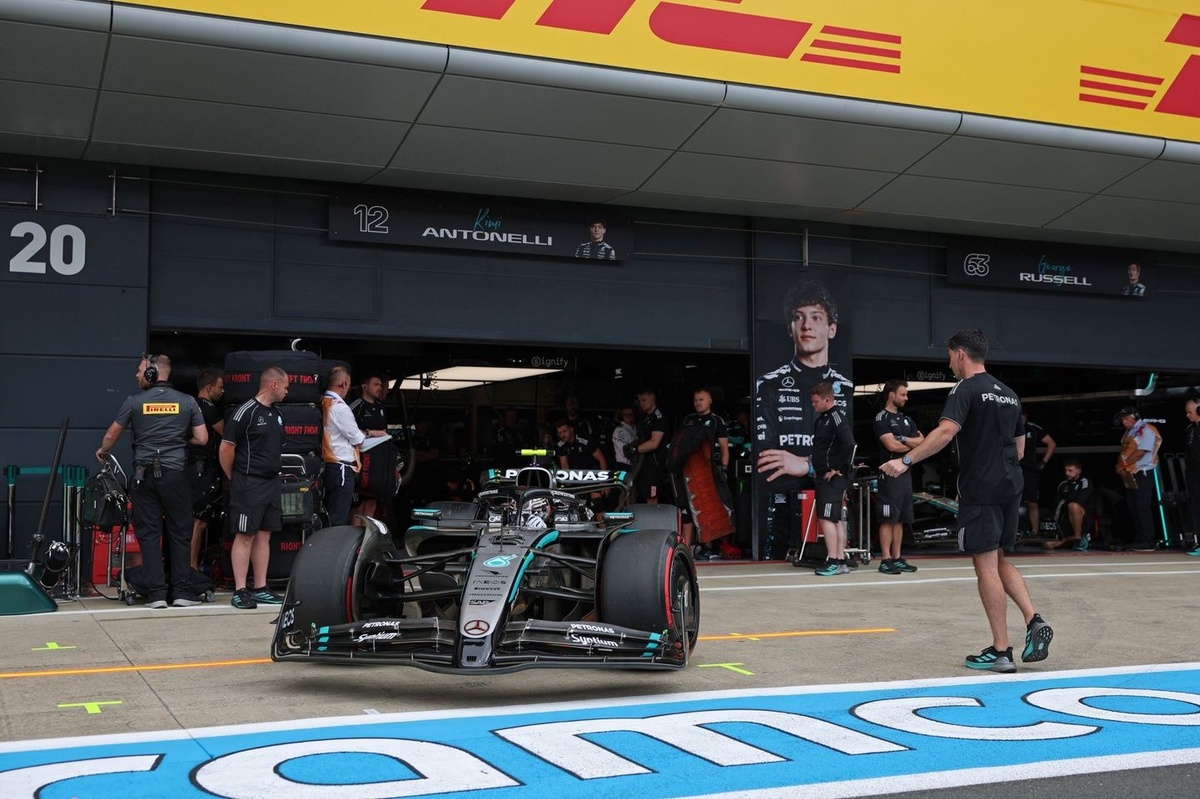Mercedes has initiated a significant technical adjustment for the upcoming Hungarian Grand Prix, strategically altering the car setups for both George Russell and rookie Andrea Kimi Antonelli. This decisive move aims to reverse the team’s recent downturn in performance, particularly focusing on Antonelli’s struggles after an initially promising start to the Formula 1 season.
Antonelli began his 2025 campaign with remarkable consistency, securing points finishes in five of the first six Grands Prix. His early season highlights included a pole position for the Miami sprint, demonstrating his raw pace and potential within the highly competitive F1 grid, which set high expectations for his inaugural year.
However, a noticeable shift in performance occurred following a suspension change introduced for the Imola Grand Prix. Antonelli has explicitly identified this technical alteration as the pivotal moment that triggered his subsequent decline, leading to a string of challenging races where he struggled to regain his earlier form.
The young driver detailed how the updated suspension system adversely impacted his confidence and made it difficult to adapt his naturally aggressive driving style. He described the car’s unpredictable behavior, particularly when pushing to the limit, which significantly hindered his ability to extract maximum performance and maintain a consistent rhythm on track.
While Antonelli did secure a maiden F1 podium in Montreal, he attributes this anomaly to the unique track characteristics of the Canadian circuit, which temporarily masked the underlying issues. Consequently, for the Hungaroring event, both Antonelli and his teammate George Russell will revert to the suspension configuration utilized earlier in the year, when Mercedes was consistently challenging the championship leaders.
Antonelli expressed optimism about the switch, stating his hope that the old suspension will restore the crucial “feeling” and confidence he had prior to the European season. He candidly admitted to not having adapted effectively to the previous setup, acknowledging that this struggle had profoundly impacted his performance and overall comfort within the car.
The turning point for Antonelli came after the Spa qualifying session, where his inability to deliver optimal performance with the problematic suspension became unequivocally clear. This moment solidified his conviction that a significant technical intervention was necessary to overcome the performance plateau and regain his competitive edge on the track.
This strategic suspension change at the Hungarian Grand Prix is not merely about a single driver’s performance; it carries broader implications for the Mercedes F1 team. It represents a critical effort to stabilize their car’s handling characteristics and potentially enhance their overall competitiveness, aiming to close the gap to their rivals and reinvigorate their challenge in the Formula 1 season.






Leave a Reply